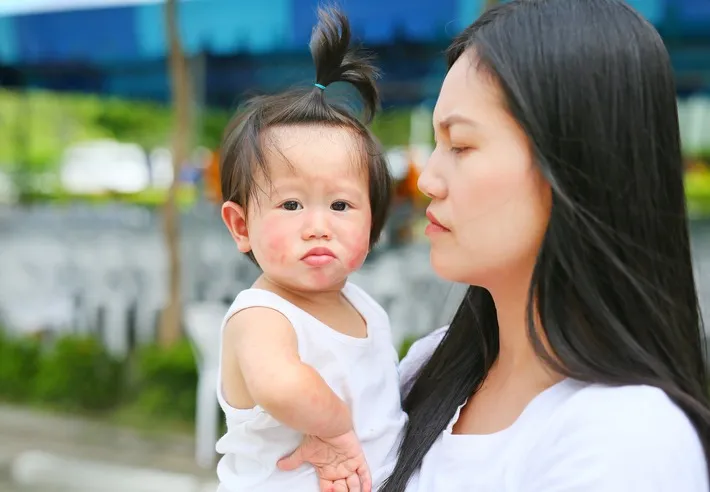Slapped cheek syndrome, commonly known as fifth disease, is a frequent occurrence in children, typically resolving on its own within 3 weeks. While less common in adults, it can pose more serious implications.
Identifying Slapped Cheek Syndrome
The initial indication of slapped cheek syndrome often involves feeling under the weather for a few days.
Symptoms may encompass
– Elevated temperature
– Runny nose and sore throat
– Headache
Duration
The characteristic cheek rash generally diminishes within 2 weeks.
While the body rash typically fades within this timeframe, it may persist for up to a month, especially during activities, in hot conditions, or amid stress and anxiety.
In adults, joint pain and stiffness may manifest. While this can also occur in children, it’s infrequent. Joint discomfort may persist for several weeks, even after other symptoms have subsided.

Uncertainty About Slapped Cheek Syndrome
If unsure whether your child has slapped cheek syndrome, consider examining other rashes in babies and children.
Self-Care Measures
Consulting a GP is typically unnecessary for slapped cheek syndrome. To alleviate symptoms, consider the following:
– Rest
– Stay well-hydrated – continue regular feeds for babies
– Use paracetamol or ibuprofen for temperature, headaches, or joint pain
– Apply moisturizer for itchy skin
– Seek advice from a pharmacist regarding itchy skin – they can recommend suitable antihistamines for children.
